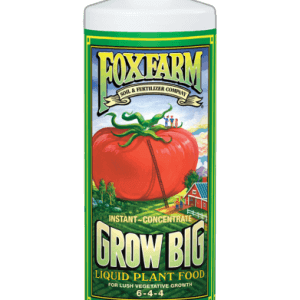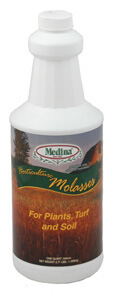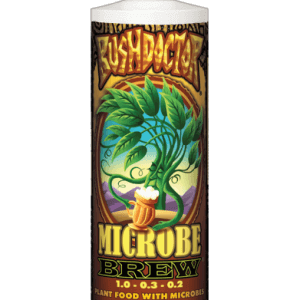Description
Big Foot Gold exists so the most demanding growers can turn their biggest ideas into their greatest work.
We are thrilled to announce the addition of our 3rd product, Big Foot Gold. This direct-to-root inoculum is setting a new standard of what an elite product should look like. With 400 in-vitro endomycorrhizal propagules per gram, and almost 1 billion cfu per gram of nitrogen fixing beneficial bacteria, Big Foot Gold is second to none.
400 propagules/gram
We use a proven 4-species blend of in-vitro endomycorrhizal spores. Growers will be happy to see we did not include ECTO-mycorrhizae in this product!
950,000,000 cfu/gram
Growers looking for a competitive edge over their competition will enjoy the brand new-to-market bacillus package we have included in this product. This specifically selected bacteria is nitrogen nutrient recycling, making available bound nitrogen for the plant. It is highly concentrated, naturally occurring and never genetically modified. This is vital for establishing a healthy soil food web.
Other ingredients:
Big Foot Gold contains a list of proprietary ingredients that are designed to limit transplant shock, accelerate mycorrhizal colonization, build the soil food web, greatly increase nutrient and water uptake, and give your plant explosive root growth.
Big Foot Gold does not contain competing fungi like Trichoderma. Studies have shown that Trichoderma competes with mycorrhizae. Big Foot Gold does not contain ecto-mycorrhizae. Ecto-mycorrhizae is scientifically proven to have no effect on endo-mycorrhizal plants such as cannabis, hemp, most fruits, most vegetables, most flowers, turf, and most herbs.
GUARANTEED ANALYSIS
CONTAINS NON-PLANT FOOD INGREDIENTS:
Mycorrhizae (400 propagules per gram)
Endomycorrhiza:
Glomus aggregatum – 100 propagules/gram
Glomus etunicatum – 100 prop/gram
Glomus intraradices – 100 prop/gram
Glomus mosseae – 100 prop/gram
Bacillus subtilis – 350,000,000 cfu/gram
Bacillus licheniformis – 200,000,000 cfu/gram
Bacillus megaterium – 200,000,000 cfu/gram
Bacillus simplex – 200,000,000 cfu/gram
What is Mycorrhizae?
“Mycor” – “rhiza” literally means “fungus” – “root” and defines the mutually beneficial relationship between the plant and root fungus. These specialized fungi colonize plant roots and extend far into the soil. Mycorrhizal fungal filmaments in the soil are truly extensions of root systems and are more effective in nutrient and water absorption than roots itself. 95% of the worlds plants form a relationship with mycorrhiza.
What does Mycorrhizae do for plants?
These Mycorrhizal fungi increase the surface absorbing area of roots 10 to 1,000 times, thereby greatly improving the ability of the plants to use the soil resource. Estimates of amounts of mycorrhizal filaments present in soil associated with plants are astonishing. Several miles of fungal filaments can be present in less than a thimbleful of soil. But mycorrhizal fungi increase nutrient uptake not only by increasing the surface absorbing area of roots.
Mycorrhizal fungi release powerful enzymes into the soil that dissolve hard-to-capture nutrients, such as phosphorus, iron and other “tightly bound” soil nutrients. This extraction process is particularly important in plant nutrition and explains why non-mycorrhizal plants require high levels of fertility to maintain their health. Mycorrhizal fungi form an intricate web that captures and assimilates nutrients, conserving the nutrient capital in soils.
Improved nutrient and water uptake
Improved root growth
improved plant growth and yield
Reduced transplant shock
Reduced Drought Stress
More flowers + fruit
What other functions do Mycorrhizal fungi perform?
Mycorrhizal fungi are involved with a wide variety of activities that benefit plant establishment and growth. The same extensive network of fungal filaments important to nutrient uptake is also important in water uptake and storage. In non-irregated conditions, mycorrhizal plants are under far less drought stress compared to non-mycorrhizal plants.
Mycorrhizal filaments also produce humic c




